Volcanoes: What is going on with eruptions around the world?
- Published
- comments
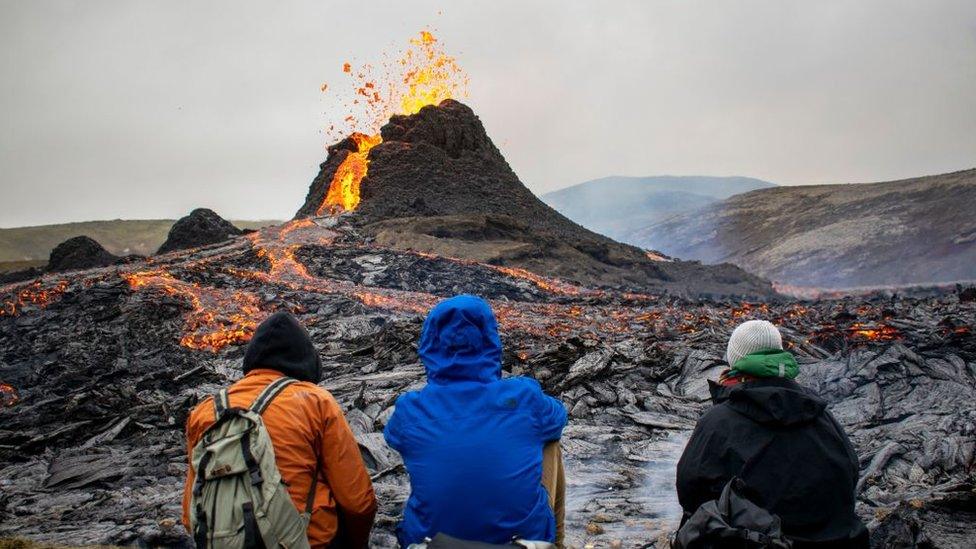
The Fagradalsfjall volcano, based in Iceland, erupted in March earlier this year
You may have heard lots in the news about volcano eruptions in the last few months.
March saw a volcano erupt near Iceland's capital Reykjavik and around 16,000 residents living on the Caribbean Island of St Vincent have had to leave their homes after the La Soufriere, which had lava flowing from it since December 2020, erupted on the 9 April.
So what's going on at the moment? Are more volcanoes erupting than usual, or is what's happening normal?
Newsround spoke to Jenni Barclay, who is a Professor of Volcanology at the University of East Anglia, and Volcanology Data Researcher Kadie Bennis from the Smithsonian Institution to find out more.
Are we seeing more volcanoes erupting then usual?
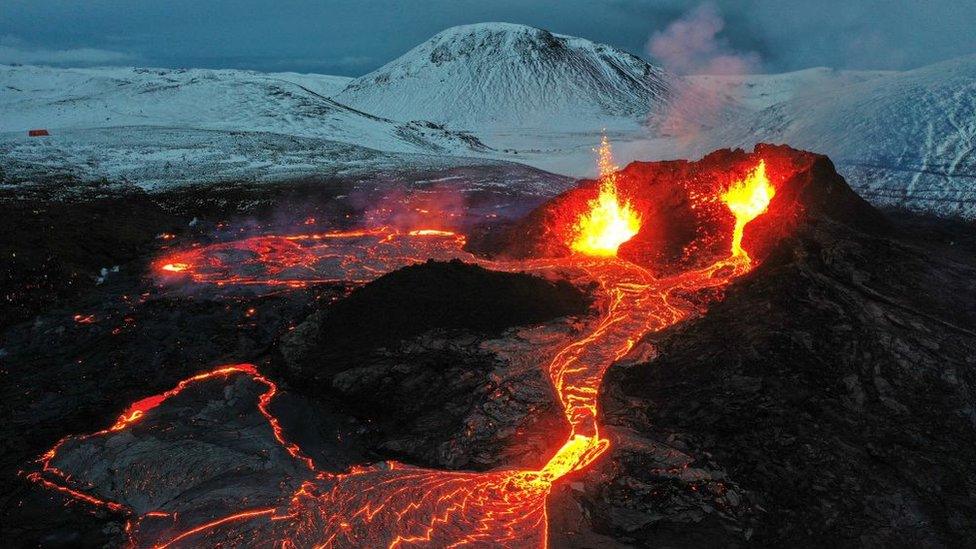
Incredible images of the Fagradalsfjall volcano were captured after it erupted
It may seem like we're hearing more reports about volcanoes erupting, but this doesn't actually mean eruptions are becoming more common.
"Generally, in and around the world, there are around 20 volcanoes erupting each day," said Professor Jenni Barclay.
Most of the time, we don't see or hear about the majority of these eruptions because of where they happen and how big they are.
"Many of these volcanoes are located in remote areas, so rarely are communities affected by their activity," said Volcanology Data Researcher Kadie Bennis.
"One of the reasons why the eruptions at St Vincent and Iceland are intriguing is due to the ability to livestream the activity, receive information directly from scientists who are currently monitoring the volcanoes, and excellent communication of the events via social media," she added.
The last month has also seen more large scale eruptions compared to normal, despite the actual frequency remaining the same, which is a another reason why we're hearing more about them.
Therefore, although it it might seem like the number of eruptions has increased, this isn't actually the case, they are just bigger and nearer to humans so we are more aware of them.
Are all eruptions the same?
The Big Question: Why do volcanoes actually erupt?
Around the world, there are 1,400 volcanoes that could erupt.
Volcanoes erupt when molten rock, which is known as magma, rises to the Earth's surface and this is caused by the movement of tectonic plates. These plates can either move apart from one another, or they can be pushed together.
The movement of tectonic plates is happening all the time, but this takes place incredibly slowly, according to Professor Barclay "it occurs at roughly the speed it takes for our fingernails to grow".
It means that most of the time we don't notice what's going on, but over time, this results in big shifts in the plates which then leads to volcanic activity.
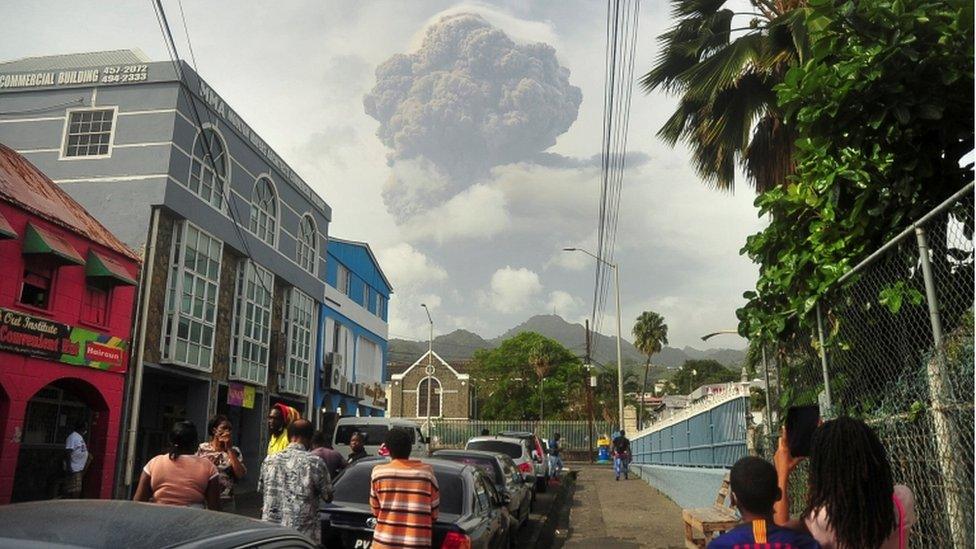
The La Soufriere erupted in St Vincent on 9 April
Eruptions differ because different types of magma are generated depending on how the plates are moving.
The volcanic eruption that recently took place in Iceland was the result of plates moving apart, and this usually produces the runny lava we often see in pictures which escapes through openings in the Earth's crust.
"In Iceland, the eruption began with thousands of volcanic earthquakes," said Kadie Bennis.
"Currently, lava is erupting from cracks in the surface of the Earth that are called fissures. This type of eruption is known as a 'fissure eruption'. Several of these fissures have opened up within the Geldingadalur valley, in addition to the formation of several small volcanic cones," she said.

The eruption in St Vincent produced large ash plumes
The magma produced from plates colliding is a little different. The eruption that took place in St Vincent is the result of tectonic plates moving together and in cases like this, the magma is stronger and flows in much more powerful way, this generally leads to bigger explosions.
"The activity that is ongoing at St Vincent started with a lava dome (lava so sticky or viscous that it 'flows' like toothpaste), accompanied by volcanic earthquakes. Currently, explosions are ongoing, which produces large ash plumes. Another hazard known as 'pyroclastic flows' is being reported, which is a mixture of hot rocks, ash, and volcanic gases that can move down a slope very quickly," explained Bennis.
These types of eruptions can often be more disruptive, particularly if people live nearby, affecting local populations and surrounding regions.
How can volcanologists detect when a volcano is about to erupt?
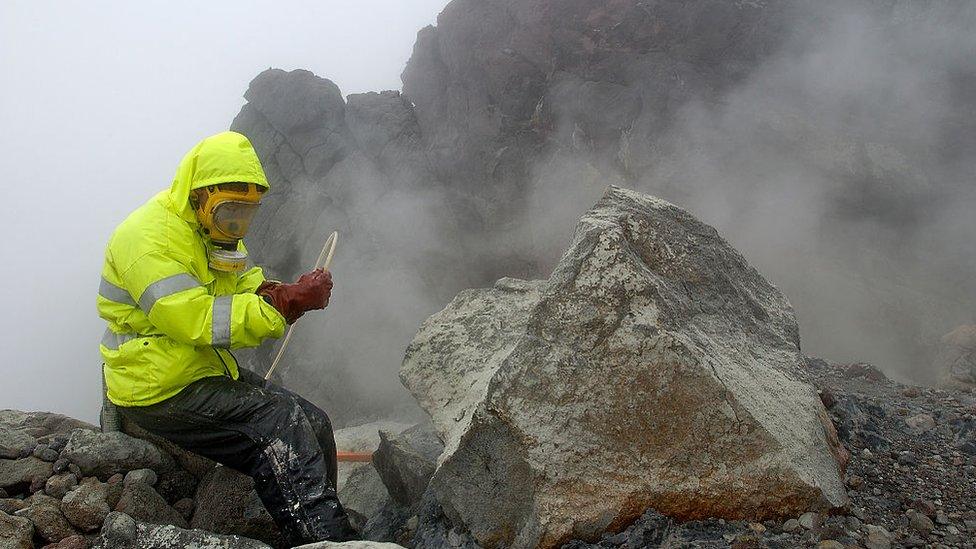
This scientist carried out research work on the gases emitted from the Soufriere Volcano which has been dormant for the past few hundred years
There are lots of clues volcanologists can look out for which help them recognise when a volcano is about to erupt. One of the big ways they're able to do this is by looking at the activity taking place deep beneath the Earth's surface, specifically when magma starts to move.
This is what prompted warnings given to locals living near the volcanoes in both St Vincent and Iceland.
Volcanologists can try to detect magma underground. When it moves it often generates earthquakes. However, there are times when the movements in the ground are so tiny that they're not actually felt on the surface.
Another way volcanologists can predict that a volcano is about to erupt involves measuring gases released both in and around them.
How do volcanologists monitor and measure eruptions?
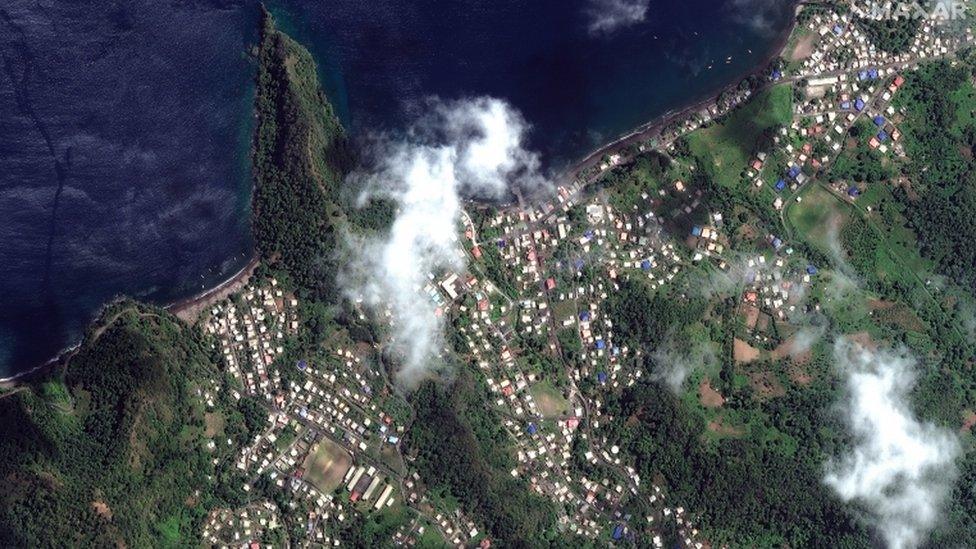
Satellites were used to measure the scale of the eruption in St Vincent
Volcanologists use lots of different tools and instruments to help them monitor eruptions and measure their scale and impact.
This includes seismometers which record movements in the ground, special instruments that detect and measure gas, satellites which circulate the Earth and can pick up tiny millimetric movements, and even drones!
"Instruments are becoming more sophisticated and the more eruptions we observe, the better we become at observing them," said professor Barclay.
- Published16 August 2015
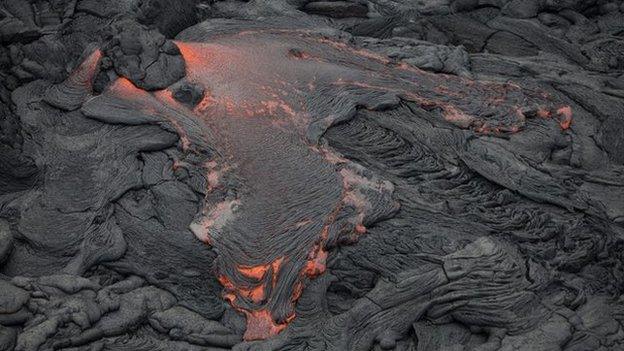
- Published19 March 2021
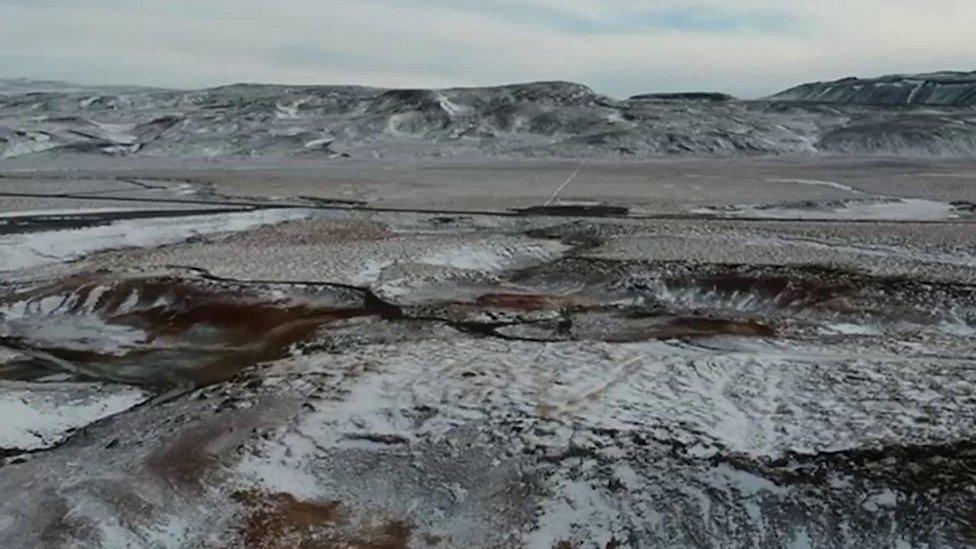
- Published22 June 2011
